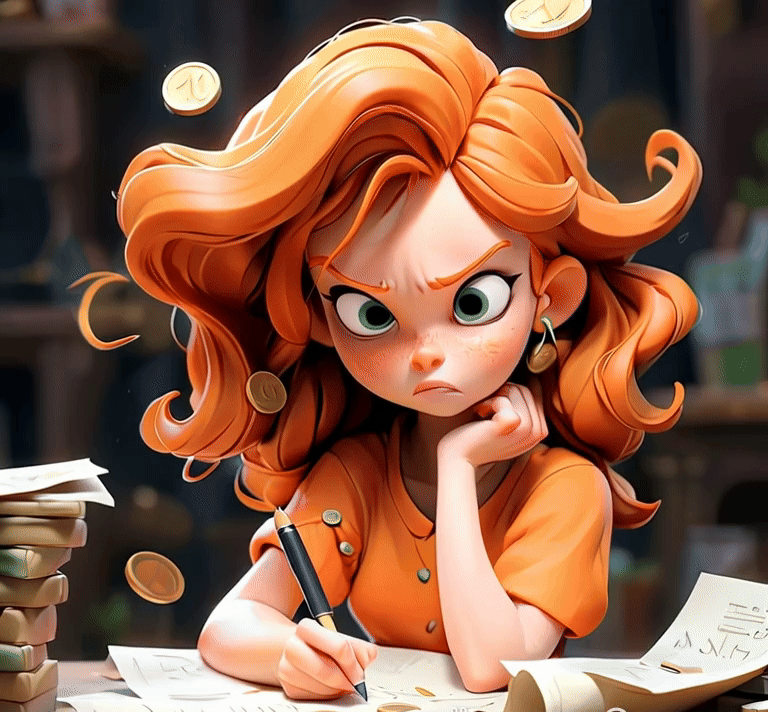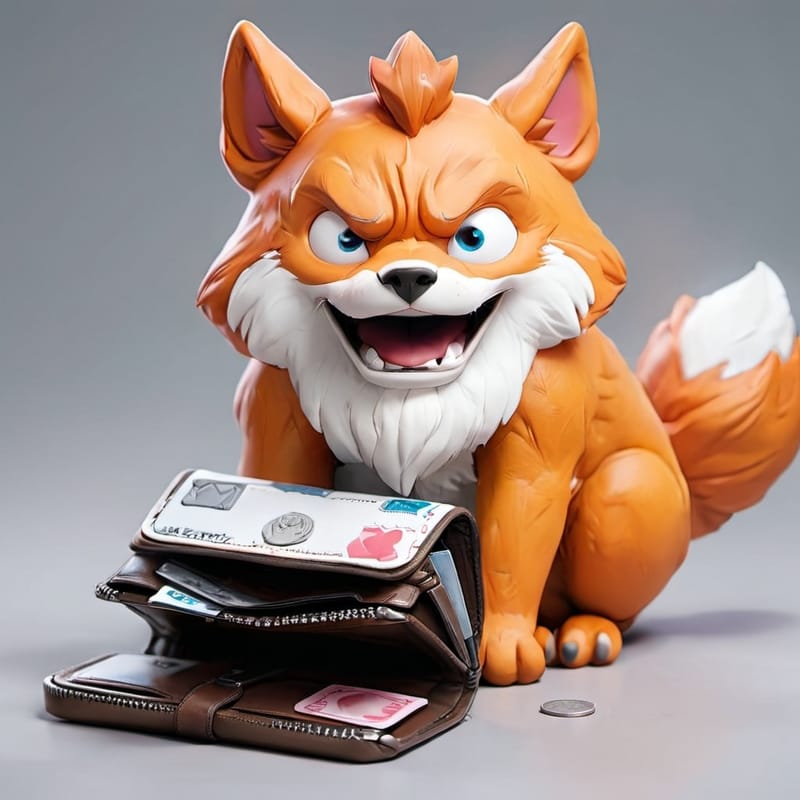● OrangePaolaWorld ●
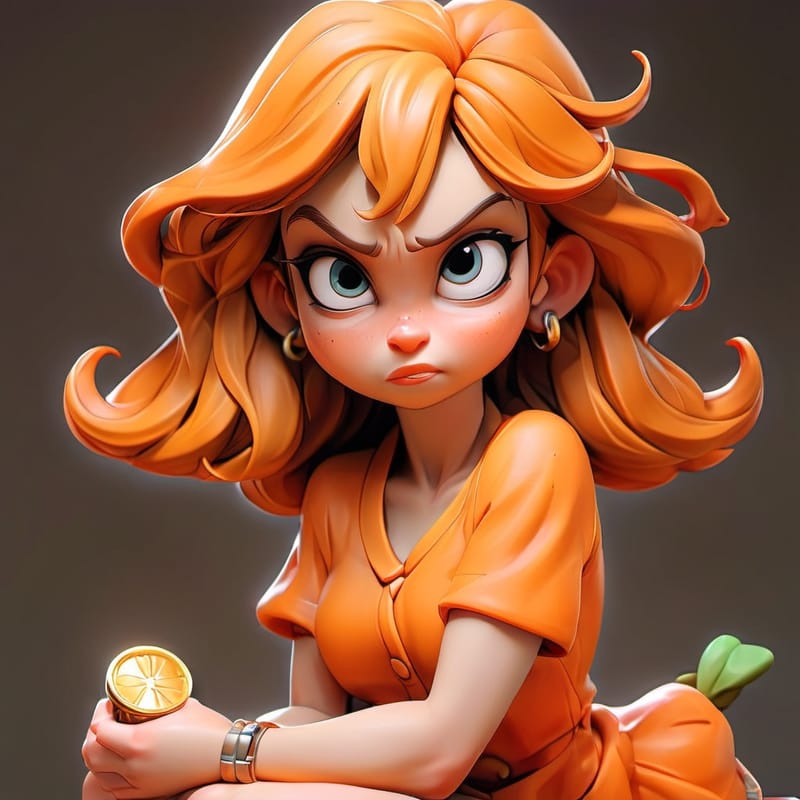
About us
◐The core description of our token is to welcome everyone to jump on the boat and ride the wild bull and bear market world of trade commerce and products. We are here to dominate and take over our unique product development and deployment of our new website in the future in 3 months with the ability to buy our products online with our token and some other select cryptocurrencies! For many years, so many have tried but no one delivered what they promised to everyone in this business of buying online to begin selling their original coin or token! Cryptocurrencies are a form of digital currency. They can be spent or traded, but they’re not issued by central banks or stored in traditional financial institutions. Instead, they’re decentralized. This means records of balances and transactions aren't controlled by banks or payment providers, instead they’re held by people who volunteer to keep track of everything using specialist software. Volunteers participate because, in doing so, they get the opportunity to earn valuable cryptocurrency without having to pay for it. Huge speculation on cryptocurrencies’ values has led to a boom in both the number and value of assets in space over the last few years – peaking in November 2021 before crashing in the spring of 2022. Our research shows that the knowledge of experts does not differ semantically, but that the information is more interconnected. The experiments conducted have shown that the size of words and the retrieval speed of words from memory varies between individuals with different background knowledge. The results of our study could also help to provide better personalized instructions to users in different domains and to establish a more interactive dialog between the user and an intelligent tutoring system. AI has a wide range of applications across industries, including healthcare, finance, transportation, manufacturing, customer service, and more. However, ethical considerations, such as bias, transparency, and accountability, are important in the development and deployment of AI to ensure responsible and beneficial use.◑
Road
map
- Contract deployment
- Website deployment
- White paper creation
- Coinmarketcap listing
- Building Community
- Get listed on Exchanges
- Establish partnerships
- Develop Orange Paola World Market
- Initial Marketing Campaign
- NFT Marketplace Launch
- Global Marketing Campaign
.
tokenomics

.
● Refers to the economics or economic principles associated with a cryptocurrency or blockchain-based token. It encompasses the various mechanisms and rules that govern the distribution, circulation, and value of a token within a blockchain ecosystem. Tokenomics is a critical aspect of many blockchain projects, as it can influence the token's supply, demand, and overall market dynamics. Tokenomics typically includes several key components, such as: Token supply: This refers to the total number or quantity of tokens that can exist within the blockchain ecosystem. Token supply can be fixed, capped, or dynamic, depending on the project's design. Token distribution: This encompasses how tokens are initially distributed, which can include methods such as ICOs (Initial Coin Offerings), airdrops, mining, staking, or other mechanisms. Token distribution can impact the token's ownership distribution and community participation. Token utility: This refers to the intended purpose and use of the token within the ecosystem. Tokens may have utility as a means of transaction, as a store of value, as a governance token for decision-making, or for other specific functions within the blockchain ecosystem. Token inflation/deflation mechanisms: These are mechanisms that affect the token's supply over time. Inflation mechanisms increase the token supply, while deflation mechanisms decrease it. These mechanisms can impact the token's value and scarcity. Token staking and rewards: Some blockchain projects may offer staking opportunities, where token holders can lock up their tokens for a certain period and earn rewards in return. This can incentivize long-term holding and community participation. Governance mechanisms: Some tokens may have governance features that allow token holders to participate in decision-making processes related to the project's development, upgrades, and overall direction. This can impact the token's value and community engagement. Market dynamics: Tokenomics also considers the supply and demand dynamics of the token in the market, including factors such as trading volume, liquidity, price, and overall market sentiment. Tokenomics is an important consideration for blockchain projects, as it can impact the token's value, adoption, and sustainability. It involves designing a system that aligns incentives for participants and promotes the desired behaviors within the ecosystem, while also considering factors such as fairness, transparency, and long-term viability. ●
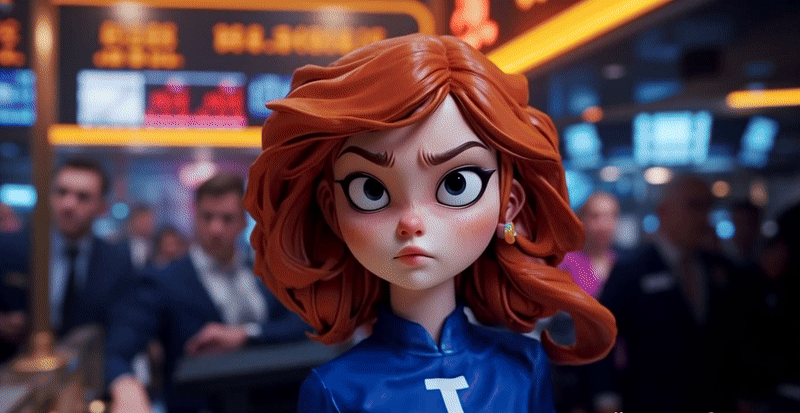
*
"IT'S IMPORTANT TO NOTE THAT EACH EXCHANGE MAY HAVE SLIGHTLY DIFFERENT PROCESSES AND REQUIREMENTS FOR BUYING AND SELLING CRYPTOCURRENCY. BE SURE TO READ THE EXCHANGE'S TERMS AND CONDITIONS AND UNDERSTAND THE RISKS INVOLVED BEFORE YOU START TRADING"
whitepaper

● We created our token to satisfy all users who are engaged in buying and trading cryptocurrencies. We have achieved this with this technology, which is meant for everyone who wants to do this or is already doing it. "We live in a changing world that needs to be followed one way or another"
We follow the standards in all areas that this development makes possible, and we follow them in this way. We are not new to the market, but that is exactly why we are innovative and resourceful to make it as friendly and understandable as possible for the users. In the world of ones and zeros, there is a lot of fraud that must be suppressed by us who want to do something good with this technology and the development in this direction.
We follow the highest security and offer standards, which we will offer more in the future, with the development and offering in the direction of online purchases. We will offer in the future at meetings and conferences, where we will also show the direction in which we want to go further.
We want to bring you on board and, of course, into the team that will only lead to success in this area! Cryptocurrency is produced by an entire cryptocurrency system collectively, at a rate which is defined when the system is created and which is publicly stated. Whitepapers can provide transparency and equality by making the project's key information public. Various parties can benefit from whitepapers. For example, while investors can make better investment decisions using them, developers can decide on their possible participation in the protocol.
"Our website will be updated according to the rules we follow in our interest and yours, so that no one will lose anything, but will only gain financially."
All markets go through cycles of expansion and contraction. When a market is in an expansion phase (a bull market), there is a climate of optimism, belief, and greed. Typically, these are the main emotions that lead to strong buying activity.
It's quite common to see a sort of cyclical or retroactive effect during market cycles. For example, the sentiment gets more positive as prices go up, which then causes the sentiment to get even more positive, driving the market even higher. ●
"Big Things Have Small Beginnings"
means that even the most impressive achievements, ideas, or projects originate from something small and unassuming. It's a concept found in many fields, encouraging patience, consistency, and the recognition that small steps are the foundation for future success, whether in personal habits, business, or major life goals.
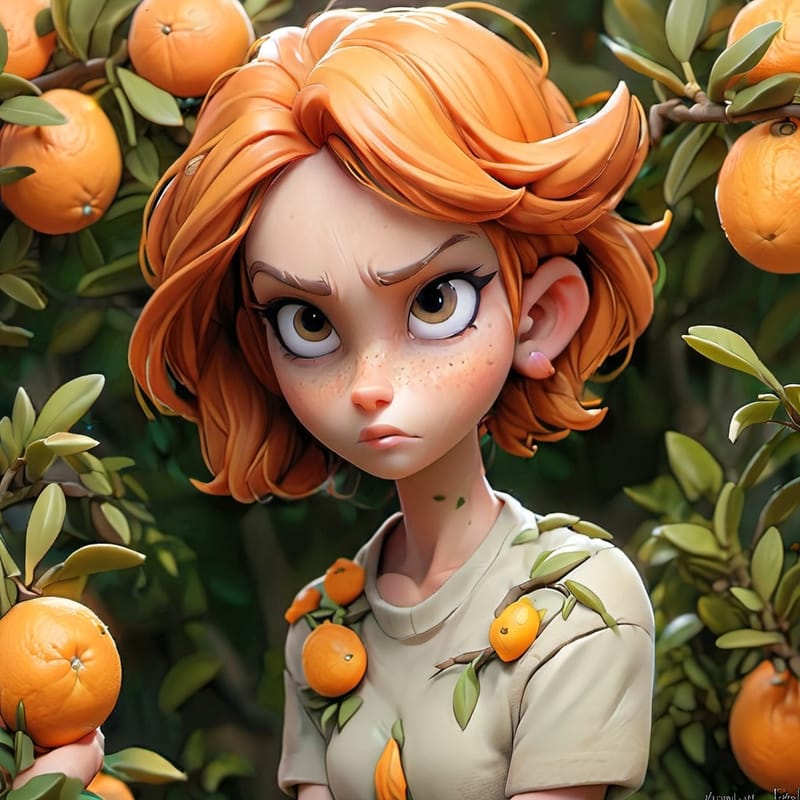
- In nature: A tiny seed grows into a giant tree.
- In business: A successful company may have started with a single idea or a small team.
- In habits: A major habit, whether good or bad, begins with a single, small decision repeated over time.
- Key message: The quote is a reminder not to underestimate the importance of small actions, as they accumulate to create significant outcomes.⭐
"The rise of OPW is unavoidable"
● Digital asset prices are subject to high market risk and price volatility. The value of your investment may go down as well as up, and you may not get back the amount you invested. You are solely responsible for your investment decisions and Orange Paola is not liable for any losses you may incur in your trading. Past performance is not a reliable indicator of future performance. You should only invest in products with which you are familiar and for which you understand the risks. You should carefully consider your investment experience, financial situation, investment objectives and risk tolerance and consult an independent financial advisor before making any investment.
It's about turning issues into opportunities.
Optimism, also known as market sentiment, reveals the movements in the financial markets dictated by the psychological perception of determined operations or trades. This could create situations of mispricing, leading investors to lower returns than they expected. These movements in sentiment can conduct price distant from economic fundamentals and pose new research questions. For example, is optimism, and consequently pessimism, a factor of influence in financial markets? Accordingly, investor sentiment, which captures these fluctuations, is increasingly a topic of research relevance.
Several studies have been conducted in order to examine the presence and the effects of sentiment in financial markets. Before an investment, investors behave differently. According to their propensity to risk and future expectations, they are divided into rational and irrational traders. Many individuals, defined as irrational, in making decisions underreact or overreact to fundamentals and returns. Therefore, evaluation and decision-making are biased with the result of mispricing, i.e., moving from its fundamental value. Definitions as overconfidence, conservatism, and representativeness can explain the concept, but there is no academic consensus on a theory or the right formula to quantify it. We dedicate the next section to a literature review and discussion on what has been found on the relationship between investor sentiments and stock market returns. ●
"We are here to change that"
▼
● Technology Behind Cryptocurrencies
The technology that powers cryptocurrencies is called blockchain, which is a distributed and decentralized ledger that records all transactions in a secure and transparent manner. Blockchain uses consensus mechanisms, such as Proof of Work (PoW) and Proof of Stake (PoS), to validate transactions and maintain the integrity of the ledger. Cryptocurrencies also rely on advanced cryptography techniques, such as public-key cryptography, to secure transactions and protect users' privacy. ●
● Types of Cryptocurrencies
Cryptocurrencies can be broadly categorized into three main types: payment coins, utility tokens, and security tokens. Payment coins, such as Bitcoin and Litecoin, are designed to be used as digital currencies for making transactions and storing value. Utility tokens, such as Ethereum and Binance Coin, are used to access and utilize decentralized applications (dApps) and services within a blockchain ecosystem. Security tokens, on the other hand, represent ownership in a real-world asset, such as property or company shares, and are subject to securities regulations. ●
● Advantages and Challenges of Cryptocurrencies
Cryptocurrencies offer several advantages, including faster and cheaper cross-border transactions, increased financial inclusion for the unbanked and underbanked populations, and the potential for investment and diversification. They also promote transparency, as all transactions are recorded on a public ledger, and enable innovative use cases, such as decentralized finance (DeFi) and non-fungible tokens (NFTs). ●
● A digital asset is generally anything that is created and stored digitally, is identifiable and discoverable, and has or provides value. Digital assets have become more popular and valuable as technological advances become integrated into our personal and professional lives. Data, images, video, written content, and more have long been considered digital assets with ownership rights.
Most digital items, like a company's brand, can be assigned a value, monetary or intangible. Some digital items might only be valuable to the creator or one person, such as a family picture on your phone taken at a gathering. Others could be valuable to a much wider audience.
In the past, digital assets such as data or scanned documents were owned and used by organizations to realize value. However, when blockchain and cryptocurrency were introduced in 2009, digital assets were again redefined. Anything in digital form became something that could be used to create value via tokenization on the blockchain.
● A dapp, or decentralized application, is a software application that is built on a blockchain network and operates in a decentralized, peer-to-peer manner. Unlike traditional applications that are hosted on centralized servers and controlled by a single entity, dapps are built on a blockchain network that is distributed across a network of nodes.
Dapps can be used for a variety of purposes, such as online marketplaces, social networks, games, and financial services. They often use smart contracts, which are self-executing contracts with the terms of the agreement between buyer and seller being directly written into lines of code, to automate certain functions and ensure transparency and security.
Because apps operate on a decentralized network, they are generally more resistant to censorship, hacking, and other forms of interference. They can also offer more privacy and control to users, as they don't rely on a central authority to manage user data or transactions. ●
● AI: The different subfields of AI research are focused on specific goals and the use of specific tools. Traditional goals of AI research include reasoning, knowledge representation, planning, learning, natural language processing, perception, and the ability to move and manipulate objects. General intelligence (the ability to solve any problem) is among the long-term goals of the field. [11] To solve these problems, AI researchers have adapted and integrated a wide range of problem-solving techniques, including research and mathematical optimization, formal logic, artificial neural networks, and methods based on statistics, probability, and economics. AI also draws on computer science, psychology, linguistics, philosophy, and many other fields. ●
●
● O. Paola ● Meme coins are a type of cryptocurrency that often start as jokes or based on internet memes but can gain significant popularity and market value. These coins typically lack the technological advancements or utility found in major cryptocurrencies like Bitcoin or Ethereum, and their value is driven mostly by community support, social media trends, and speculative trading. Here are some notable meme coins:
Dogecoin (DOGE): One of the most well-known meme coins, Dogecoin was originally created in 2013 by software engineers Billy Markus and Jackson Palmer as a parody of Bitcoin, featuring the "Doge" Shiba Inu dog meme. Despite its origins as a joke, Dogecoin gained a massive following, particularly after endorsements from high-profile figures like Elon Musk.
Shiba Inu (SHIB): Often referred to as the "Dogecoin killer," Shiba Inu is a meme coin built on the Ethereum blockchain. It gained attention for its massive supply and community-driven hype, and it has experienced significant price surges driven by social media and celebrity influence.
PepeCoin (PEPE): Inspired by the "Pepe the Frog" meme, this coin is another example of how internet culture can fuel the creation of cryptocurrencies. Like other meme coins, its value is tied to the meme community and the trends that drive its popularity.
Floki Inu (FLOKI): Named after Elon Musk’s dog, Floki Inu is yet another dog-themed meme coin. It aims to build its community by combining memes and utility, including plans for NFTs, games, and more. Meme coins can be highly volatile and speculative, so while they might offer significant gains in short periods, they come with high risks. Many investors participate in meme coin trends for fun or as part of the culture, and it's essential to research before investing. .
features & upgrades
On arrival, to buy our cosmetic & air car freshers and health products online
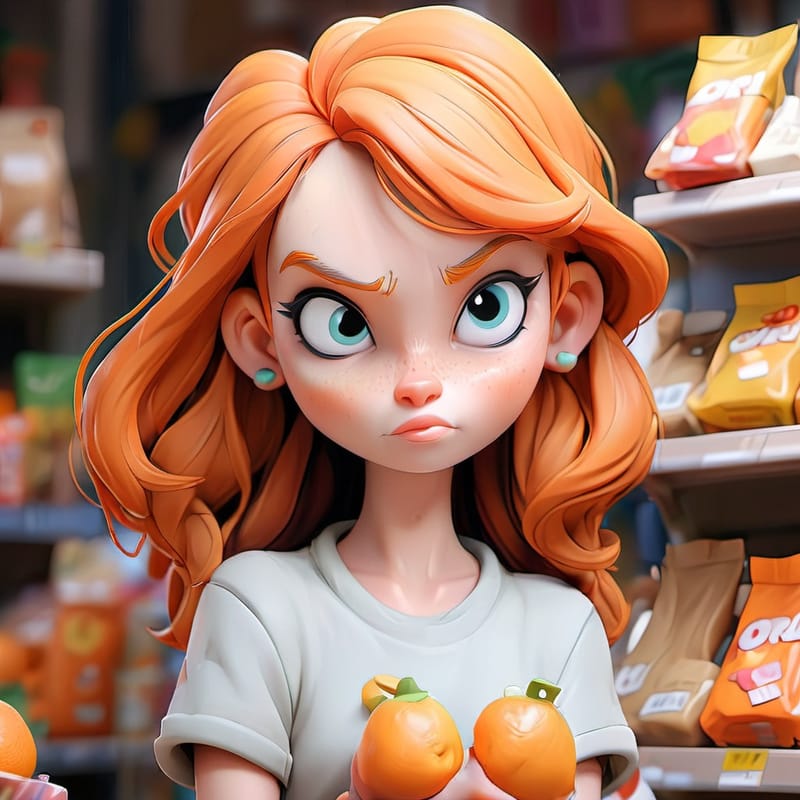
● Our updated site for buying merchandise ●
The revenues of major social networks, now measured in billions and rising steeply from year to year, come mainly from online advertising. Social network advertising is becoming an increasingly important means of promoting products and services. A typical social network advertising campaign contains multiple ad groups, and each ad group contains multiple ads. When managing ad campaigns, decisions about which ad groups and ads should be active and for which more advertising dollars are allocated are particularly important.
.
Orange ranks first among the useful fruits with many protective properties against winter diseases. With its high amounts of vitamin C, potassium, folic acid and citrate; it prevents damage to cells, fights cancer-causing free radicals, strengthens and protects the immune system. In addition to being consumed as fresh fruit, it stands out as a useful nutrient in terms of nutrition in its juice and dried form
It has many benefits for human health with its vitamins, minerals, potassium, magnesium, fiber, etc. The vitamins and minerals needed by the body can be met by this fruit. The benefits of orange are as follows:
Rich in vitamin C Protects against winter diseases It has strong antioxidant properties Supports the immune system Regulates the digestive system Protects heart health Carries preventive properties against cancer Prevents anemia and improves iron absorption Protects the skin and delays aging Protects and supports cells Regulates blood pressure Helps collagen production Effective against Alzheimer's disease Effective against problems that may occur during pregnancy May prevent the formation of kidney stones Accelerates fat burning Reduces inflammation What are the Benefits of Orange for Skin? The fruit, which contains plenty of vitamin C and water, is very beneficial for skin health. Skin care practitioners usually slice the peel or fruit and apply it to the skin. Many cosmetic companies obtain cream, shampoo and make-up from the extract of the fruit. It moisturizes and regenerates the skin and keeps it alive. The fruit, which nourishes the skin and regenerates the pores when consumed in moderation, provides a brighter and more vibrant appearance to the skin. It also delays skin aging.
What are the Benefits of Orange Peel?
The fruit, which has strong properties in terms of vitamin C, has protective and preventive properties against winter diseases. The fruit itself as well as the peel has various properties and benefits. The benefits of orange peel are as follows: Protects skin health Provides teeth whitening Regenerates cells Exercises the intestines and supports digestion Accelerates metabolism Lowers high cholesterol Destroys germs and bacteria Eliminates bad odors in rooms with its nice smell Good for hair follicles and eliminates dandruff The bark can be used in many areas in the kitchen. In addition to boiling and making tea, it adds flavor to cakes and snack foods.
What are the Benefits of Orange Juice?
When consumed with foods containing iron source in individuals with iron deficiency, it is beneficial in the treatment of anemia. In addition, when the daily fruit and vegetable consumption of the individual is insufficient, consuming 1 glass of orange juice meets the daily vitamin C requirement. In addition to these, there are many benefits of squeezing the fruit, which is the vitamin store of the winter months, and consuming it in liquid form. Benefits; It prevents the formation of kidney stones, eliminates problems such as constipation and diarrhea, reduces the effect of diabetes, regenerates cells that may pose a cancer risk and nourishes hair follicles.
Which Vitamins are in Oranges?
The fruit, which is beneficial for the immune system and digestive system with its strong antioxidant properties, is used in the treatment of diseases such as flu during the cold winter months. It contains; It is a food rich in vitamin C, vitamin B, magnesium, calcium, high fiber content and natural sugar.
What are the Nutritional Values of Orange?
The fruit, which is very important for health, has the feature of keeping full for a long time with its high fiber content. The nutritional values of an orange with approximately one serving of 100 grams are as follows: Calories: 48 Carbohydrate 12 grams Protein 1 gram Fat: 0.2 grams Fiber: 2.5 grams Vitamin C 88 percent of the daily value Vitamin A 5 percent of the daily value Potassium: 5 percent of the daily value
What are the Harms of Orange?
As with every food, it is very important to consume this fruit in moderation. If too much is consumed during the day, some problems may arise. Since it is an acidic fruit, it can cause problems such as heartburn, bloating or gas in people with digestive system diseases such as gastritis, reflux or ulcers. However, people who use blood thinners should consume it in moderation daily and limit it to 1 piece. In addition, individuals with diabetes or insulin resistance should consume fruit with protein-based products such as nuts (unroasted), milk, yogurt and pay attention to portion size in order to provide better blood sugar control.
social
.
media
♻️

│►
Gaming and crypto have become increasingly intertwined with the rise of blockchain-based games, play-to-earn (P2E) models, and the integration of cryptocurrencies as in-game currency. Here are a few key ways they're connected:### 1. Play-to-Earn (P2E) Games — In P2E games, players can earn real cryptocurrency by playing, competing in in-game tasks, or winning challenges. These games usually run on blockchain technology, where rewards are stored as NFTs or tokens. Popular games like Axie Infinity and Decentraland allow players to earn money while they play, creating a new economy around gaming. ### 2. NFTs (Non-Fungible Tokens) in Gaming — NFTs have made their way into gaming as in-game items or assets. These can be anything from skins, characters, weapons, or land in virtual worlds. Because NFTs are unique and tradable, players can own their items in a decentralized manner, and they have real-world value. For instance, players might buy and sell rare NFTs in games like The Sandbox or CryptoKitties. ### 3. In-Game Currency: Many blockchain-based games use their own cryptocurrencies or tokens as the main in-game currency. These tokens can be traded or cashed out on crypto exchanges. The value of these currencies can fluctuate, making them a potentially profitable venture for skilled players or investors. ### 4. Decentralized Virtual Worlds — Some games have built entire virtual economies where land, properties, and other assets are bought and sold as NFTs. Decentraland and The Sandbox are prime examples where players can buy virtual land, create experiences, and sell them for a profit, all with cryptocurrency. ### 5. Blockchain for Game Development — Blockchain technology offers transparency and security, allowing for verifiable ownership of in-game assets. Developers are increasingly using blockchain to create decentralized games where players truly own their assets, rather than just renting them from the game server. ### 6. Staking and Yield Farming - Some crypto platforms allow users to stake their gaming tokens and earn rewards over time, adding another layer to the play-to-earn ecosystem. ### Potential Benefits:- Ownership: Players own their assets in a way that traditional games don't offer. - Earning Potential: Players can potentially make real money, either by earning tokens or by trading NFTs. - True Scarcity: Because of the blockchain, digital assets in these games can have true rarity, adding value. ### Challenges:- Volatility: The value of in-game tokens can be unstable, which makes it a risky investment. - Regulation: Since crypto and NFTs are still relatively new, there may be future regulatory concerns in various countries. - Environmental Impact: Some blockchain technologies, especially those using proof-of-work, can be energy-intensive. Do you play any blockchain games, or are you curious about getting into space?
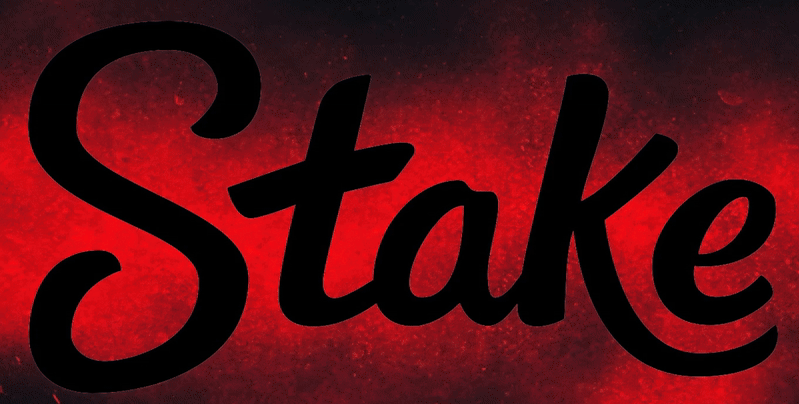
Stake
Play the best online casino games, slots & live casino games, or bet on sports at Stake.com! Unlock VIP bonuses, bet with crypto and win big prizes.
Link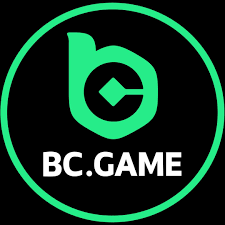
BCGAME
Best Crypto Casino.Biggest crypto crash game.Provably fair & Live dealer.10000 slot games.Unique bonus & free lucky spins.BTC,ETH,DOGE,TRX,XRP,UNI,defi ...
Link.
⭕
Amateur Investor
NFT stands for Non-Fungible Token. It's a unique digital asset that represents ownership of a specific item or piece of content, typically using blockchain technology (most commonly on the Ethereum blockchain). Unlike cryptocurrencies like Bitcoin, which are fungible (one Bitcoin is the same as another), NFTs are unique and cannot be replaced by anything else. NFTs are often used for: Digital Art: Artists can sell their work as NFTs, ensuring ownership and authenticity. Collectibles: Digital collectibles (like trading cards or virtual pets) are bought and sold as NFTs. Gaming: In-game assets, like skins or characters, can be owned and traded as NFTs. Music, Videos, and Other Media: Creators can sell their work as NFTs to ensure creators maintain control over distribution and royalties. The value of NFTs can vary greatly depending on the demand for the digital item and the perceived rarity or significance.
XPERIENCED TRADER ⭐⭐⭐⭐⭐
Paola Pinna's NFT Art: Paola Pinna is a prominent female NFT artist known for her 3D figurative works influenced by internet and gaming culture. Her art often explores themes of female empowerment and spirituality. An interview discussing her journey into the NFT space and highlights of her career can be found here: The NFT Magazine
Link▼ Example
Paola Antonelli's Curatorial Work with NFTs: Paola Antonelli, a curator at MoMA, has been involved in projects exploring the intersection of art and technology, including NFTs. An example is the collaboration with artist Refik Anadol, where machine learning was used to interpret MoMA's collection, resulting in NFT artworks. More details are available here:
Link● Orange Paola World NFT ●
⭕
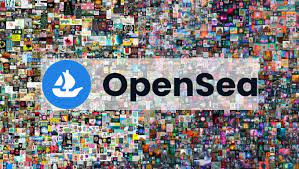
.
Multi-Blockchain Support: OpenSea operates across several blockchains, including Ethereum, Polygon, Klaytn, and Solana, offering flexibility for creators and collectors. The ultimate crypto & NFT frontend +1 cryptoreviews.io +1 Free Minting: Creators can mint NFTs without upfront gas fees using OpenSea’s Collection Manager. The NFT is only minted on-chain after the first sale or transfer. The Motley Fool +2 chaintech. Network +2 Forbes +2 Creator Royalties: Artists can set royalties up to 10% on secondary sales, ensuring they earn from future transactions of their work. The Motley Fool User-Friendly Interface: The platform boasts an intuitive design, making it easy for users to browse, buy, and sell NFTs. Mobile App: OpenSea offers a mobile app for iOS and Android, allowing users to manage their collections on the go. 💰 Fees and Payments Transaction Fee: OpenSea charges a 2.5% fee on every sale, paid by the seller. The Motley Fool +1 cryptoreviews.io +1 Payment Methods: The platform accepts various cryptocurrencies, including Ethereum (ETH), Solana (SOL), USD Coin (USDC), and DAI. It does not support fiat currency payments directly but offers options to purchase crypto via services like MoonPay. cryptoreviews.io +1 Forbes +1 ⚠️ Considerations Centralization: Despite operating on decentralized blockchains, OpenSea itself is a centralized entity, which may be a concern for some users who prioritize decentralization. Forbes Security: While OpenSea implements robust security measures, users should remain vigilant against scams and phishing attacks, as the platform has been a target in the past. For more information or to explore the marketplace, visit OpenSea.
Link⭕
● Even the Bear is worried, and it should be ●
● TRADING _
In the very short future we will put out our own App. and programable bot for trading our currency. Because we want to see everyone involved to prosper from this coin. ● Crypto trading refers to the buying and selling of cryptocurrenci es, such as Bitcoin, Ethereum, and others, with the aim of making a profit. This type of trading is often done on cryptocurrency exchanges, which are platforms that allow users to buy and sell cryptocurrencies for other digital assets or fiat currencies, such as dollars or euros. ●
● We mean buissness ●
NEWLY DEVELOPED _
▼
● orange-paola-world, has nothing to do with any other so called similar name meme coins ●

│
The cryptocurrency market continues to evolve rapidly, with numerous new coins and tokens emerging regularly. Here are some of the latest additions:1. USD1 Launched by World Liberty Financial, a company associated with the Trump family, USD1 is a stablecoin pegged to the U.S. dollar. It's backed by short-term U.S. Treasuries, dollar deposits, and other cash equivalents. USD1 is issued on both the Ethereum network and a blockchain developed by Binance. This initiative aims to blend decentralized finance's potential with traditional finance's security. Financial Times +5 WSJ +5 San Francisco Chronicle +5 2. USDe (Ethena Stablecoin) Developed by Ethena Labs, USDe is a noncustodial, censorship-resistant stablecoin. It utilizes advanced financial strategies, including hedging the delta of spot assets during minting, to achieve price stability. USDe offers scalability and impressive yields, providing users with a unique alternative in the digital currency landscape. Coin Bureau 3. ORDI is a token within the Bitcoin network that leverages the Ordinals protocol. This protocol allows data to be inscribed directly onto individual satoshis, Bitcoin's smallest units. ORDI represents a significant step in utilizing Bitcoin's blockchain for digital ownership and asset representation, expanding Bitcoin's utility beyond financial transactions. Coin Bureau 4. JetBolt (JBOLT) JetBolt is a cryptocurrency offering zero gas technology, easy-to-earn staking, and AI-powered utility. It aims to revolutionize the Web3 space by eliminating high gas fees and simplifying staking processes. JetBolt also provides AI-driven daily news updates to keep users informed about the latest blockchain developments. Disrupt Africa 5. Solaxy (SOLX) Solaxy is Solana’s first Layer 2 scaling solution, designed to enhance speed, reduce costs, and improve scalability. Leveraging roll-up technology, Solaxy offloads transactions while maintaining Solana’s security and efficiency. It has raised $27.6 million and offers cross-chain compatibility with Ethereum. Cryptonews 6. Mind of Pepe (MIND) Mind of Pepe is an AI meme coin featuring autonomous trading and social media analysis capabilities. Its AI agent scans platform like X to detect market trends and provide insights for holders. The AI also launches its own tokens, giving holders exclusive early access, creating a self-sustaining ecosystem. Cryptonews 7. Best Wallet Token (BEST) Best Wallet Token powers a multichain crypto wallet supporting over 60 blockchains, including Ethereum and Solana. The wallet features a built-in decentralized exchange (DEX) and presale aggregator, providing integrated trading and investment tools. Holding $BEST unlocks benefits like reduced fees on the upcoming Best Card, a crypto debit card. Cryptonews These developments highlight the dynamic nature of the cryptocurrency market, with projects continually introducing innovative solutions to address various challenges and enhance user
$A₿AN COINS
▼ -in a short time
● A registered trademark is a legally recognized mark (such as a logo, brand name, slogan, or symbol) that has been officially registered with a government trademark office—like the United States Patent and Trademark Office (USPTO) in the U.S. Once registered, the owner gets exclusive rights to use the mark in connection with the goods or services specified in the registration. Denoted with the ® symbol. Provides legal protection against unauthorized use (infringement). Can be renewed indefinitely (typically every 10 years in the U.S.). Enhances brand value and customer trust. Registration is jurisdiction-specific—U.S. protection does not automatically apply internationally. ● ● Single Registration: A single application grants protection in all EU member states, simplifying the process for businesses operating in multiple countries. Duration: An EU trade mark is valid for ten years from the date of registration and can be renewed indefinitely for additional ten-year periods. Types of Marks: The EUTM can protect various types of marks, including: Word marks Figurative marks (logos) Shape marks Color marks Sound marks (under certain conditions) Rights Granted: The owner of an EUTM has the exclusive right to use the mark in connection with the goods and services for which it is registered. This includes the right to prevent others from using a similar mark that could cause confusion. Application Process: To apply for an EUTM, one must submit an application to the European Union Intellectual Property Office (EUIPO). The application is examined for compliance with legal requirements, and if approved, the mark is published for opposition. Opposition Period: After publication, third parties have three months to oppose the registration of the trade mark if they believe it conflicts with their existing rights. Infringement and Enforcement: Trade mark owners have the right to take legal action against any unauthorized use of their mark that infringes their rights. ●
www.$a₿ancoins.com
New site wil be published. If you're looking to discover new cryptocurrency coins before their official launch, several platforms and communities specialize in listing upcoming projects, including presales and "unfair launches". We are to crush these blatant platforms.
▼
'Energy does not lie.'
.
"Make sure the people in your boat are rowing & not poking holes while you are not looking."
▼
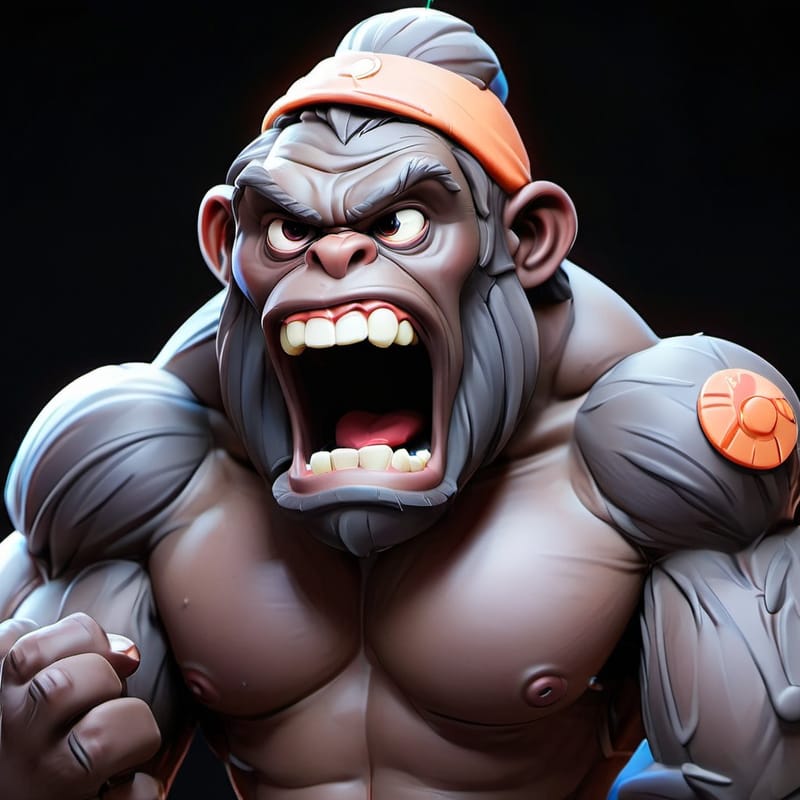
ApeSpace Honeypot checker
ApeSpace platform (apespace.io) that helps users determine whether a token is a honeypot (i.e. one that allows buys, but blocks sells, trapping funds). This tool simulates both buy and sell transactions automatically and flags tokens accordingly. It's powered by GoPlus Security and Honeypot.is and provides a token audit based on over 30 security indicators including taxes, ownership, mintability, and contract verification.
Link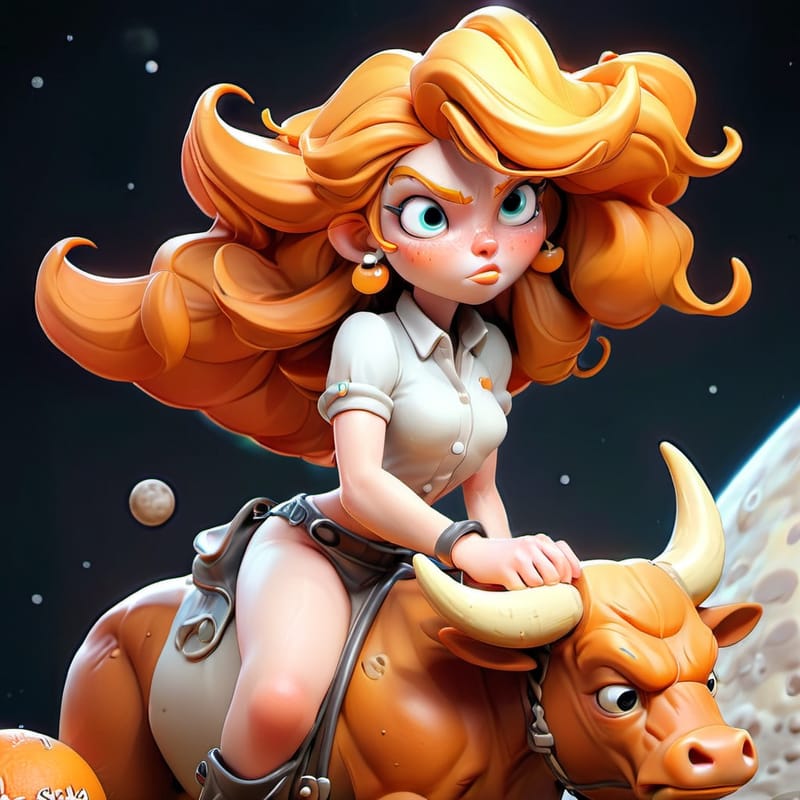
'to the moon and never back'
In collaboration
with Intelligent solutions for the modern world

⋮
Artists & Illustrators looking to iterate creative concepts fast. Content Creators & marketers needing visuals for blogs, social media, or branding. Game developers & designers crafting character concepts or environments Educators & Students exploring AI art in learning contexts Hobbyists wanting to experiment with AI visuals or create character-based series.
.
"Think Digital wealth"
join us at global chain events & learn more about blockchain future and orangepaoalworld future products

17th Edition Blockchain Life 2026 1-2 December UAE Dubai FESTIVAL ARENA
The Forum brings together crypto whales, founders, and top executives of the leading companies, gathering over 15,000 participants from 130+ countries. Visionary speakers will unveil key insights, forecasts, and strategies to maximize opportunities during the Bull Run.
Link
Blockchain Forum 2026 Moscow 14-15 April
16TH INTERNATIONAL FORUM ON AI, WEB3, CRYPTOCURRENCIES AND MINING
Link
Paris Blockchain Week | Paris | 15–16 April 2026
Join the global blockchain elite at Paris Blockchain Week, the premier event for professionals shaping the future of blockchain and Web3 technologies.
Link
Consensus Hong Kong 2026 10-12 February
After a sold-out debut, Consensus Hong Kong has quickly become Asia's leading Web3 conference, strengthening the bridge between the East and West to drive innovation in the APAC region and beyond.
Link.
ℹnformation
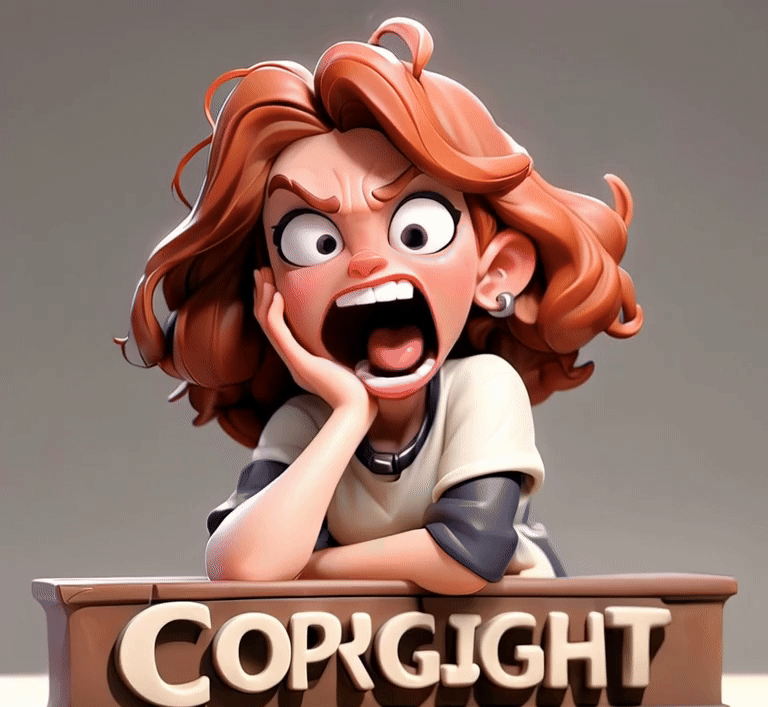
I am the rightful owner of all images & videos shown on this page Orange-Paola-World ©
Copyright law is a legal framework that grants creators of original works exclusive rights to their creations, allowing them to control how their works are used, distributed, and reproduced. The main goal of copyright is to encourage creativity and innovation by giving creators protection for their works, usually for a limited period. Here are some key points about copyright law: 1. What is Protected by Copyright? Copyright protects original works of authorship that are fixed in a tangible medium of expression, such as: literary works (books, articles, etc.), Musical works (songs, compositions), Dramatic works (plays, scripts), Visual works (paintings, drawings, sculptures) Motion pictures and other audiovisual works Sound recordings Software programs Architectural works Photographs Sculptures, and more. 2. What Copyright Protects vs. What it Doesn’t Copyright protects the expression of an idea (e.g., the specific way a story is written, or a song is composed), but not the idea itself. It doesn’t protect facts, procedures, methods, or systems (these may be protected under patent or trademark law). It doesn’t cover things like titles, short phrases, or slogans. 3. Rights Under Copyright, copyright holders have the exclusive right to: Reproduce the work; distribute copies of the work; Perform or display the work publicly Create derivative works (e.g., adaptations, sequels, or transformations of the original work) 4. Duration of Copyright The length of copyright protection varies depending on the jurisdiction and when the work was created. In the United States, for works created after January 1, 1978, the duration is typically the life of the author plus 70 years. For works created for hire or anonymous works, the copyright lasts 95 years from publication or 120 years from creation, whichever is shorter. 5. Fair Use and Exceptions Copyright law includes certain exceptions, such as fair use, which allows limited use of copyrighted material without permission under specific conditions. Common examples include: Criticism, comment, news reporting, teaching, scholarship, and research. The use must be considered fair, based on factors like the purpose of use (e.g., commercial vs. non-commercial), the nature of the copyrighted work, the amount of the work used, and its effect on the market value of the work. 6. Infringement If someone uses a copyrighted work without permission or outside the scope of fair use, it can lead to copyright infringement. This may result in civil lawsuits. The copyright holder can seek damages, which can include actual damages or statutory damages. Criminal penalties: In some cases, infringement can result in criminal charges and fines. 7. Copyright Registration While copyright is automatic once a work is created and fixed in a tangible medium, registering a work with the copyright office offers additional benefits, such as legal evidence of the copyright's existence. The ability to file a lawsuit for statutory damages and attorney's fees. International protection under various treaties (e.g., Berne Convention). 8. Public Domain and Creative Commons When a copyright expires, the work enters the public domain, meaning it can be freely used by anyone. Some creators choose to license their works under Creative Commons licenses, allowing others to use the work under certain conditions (e.g., attribution, non-commercial use). Copyright law can be complex, but it provides important protections to encourage the creation and sharing of artistic and intellectual works. If you’re working with or creating original content, understanding copyright is crucial.
forthcoming
Available versions on devices
Mobile
Tablet
APP
꙰
Developer: Mirza Sabanovic
